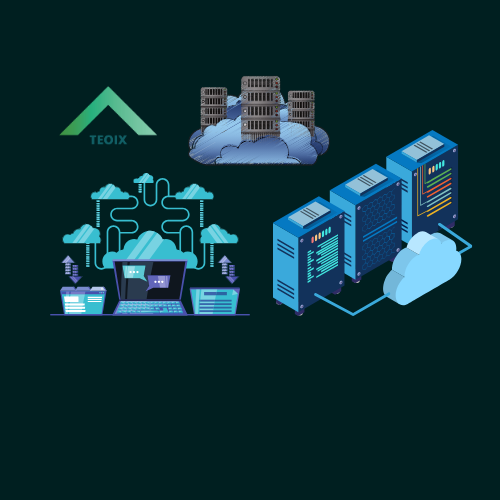Why Cloud Computing is Called "Cloud": Understanding the Metaphor and Technology
CLOUD COMPUTING
5/25/20243 min read


The phrase "cloud computing" has proliferated in the computer world, completely changing the way we handle, store, and use data. In cloud computing, the word "cloud" refers to a metaphor that is ingrained in the conceptual and practical structure of the technology, not just a trendy buzzword. This essay explores the meaning behind the name "cloud," as well as the history, fundamental ideas, and ramifications of cloud computing.
Origins of the Term "Cloud"
In cloud computing, the word "cloud" refers to the abstract combination of services and intricate infrastructure that make up this technology. The Internet and large-scale networks were historically frequently represented in network diagrams as clouds, signifying an omnipresent and amorphous area through which data is transferred. The idea that users only needed to know that their data would pass through this illusive entity in order to reach its destination—the specifics of the network's infrastructure were concealed from them—was represented by this visual metaphor.
Abstraction and Simplification
The abstraction that cloud computing offers is one of the main reasons it is referred to as the "cloud". Through the abstraction of IT infrastructure, cloud computing allows consumers to access and use services without having to comprehend or maintain the underlying hardware. This is similar to how a genuine cloud blocks out the sky so that we may enjoy the weather without getting caught up in the minute meteorological details.
This abstraction, as it relates to cloud computing, allows users to engage with scalable resources—like storage, processing power, and apps—through the internet without having to worry about the actual servers, data centers, or upkeep procedures that support these services.
Ubiquity and Accessibility
Cloud computing, like real clouds that are everywhere in the sky, also represents accessibility and ubiquity. With cloud services, consumers and companies may harness processing power and storage without being restricted to a specific location. These services are accessible from any location with an internet connection, making them a seamless and flexible option. This accessibility for all is a great metaphor, much like a cloud, which can be seen and reached from practically anywhere on Earth.
Scalability and Elasticity
The flexibility and scalability of cloud computing is another feature that supports the "cloud" concept. Cloud computing resources can dynamically scale up or down in response to demand, just as clouds can grow, shrink, and change shape in reaction to climatic conditions. Businesses may effectively manage workloads and make sure they only use the resources they require at any given moment thanks to this elasticity, which can result in significant cost savings and operational efficiencies.
The Service Models: IaaS, PaaS, and SaaS
Three main service models are commonly used to describe cloud computing, and each provides varying degrees of abstraction and service:
Infrastructure as a Service (IaaS):
Via the internet, infrastructure as a service (IaaS) offers virtualized computer resources. Virtual machines, storage, and networks that may be scaled up or down based on demand are available for rent by users.
Platform on Demand (PaaS):
Provides a platform that lets users create, execute, and maintain applications without having to worry about the supporting infrastructure. Faster deployment and development cycles are made possible by this.
Software as a Service (SaaS):
Provides software programs via the internet in exchange for a subscription. Software programs don't need to be installed or maintained on local devices; users can access them online.
These models demonstrate the tiered architecture of cloud computing, whereby successive layers abstract ever-more information, hence improving end-user experience.
Security and Reliability
Security and dependability are also gently hinted at by the cloud metaphor. Although real clouds might appear soft and innocent, cloud computing systems are made to be strong, safe, and dependable. Distributed architectures, encryption, and data redundancy make sure that data is safe and accessible even in the event of hardware malfunctions or online attacks. Building confidence among consumers and organizations using cloud technologies is contingent upon the dependability and security of cloud technology.
Conclusion
In cloud computing, the word "cloud" is a potent and appropriate metaphor that sums up this revolutionary technology. It represents the abstraction, ubiquity, scalability, and flexibility that cloud computing provides, enabling individuals and enterprises to access and manage sophisticated and potent IT resources. Just as clouds improve our perspective of the sky while hiding intricate processes beneath, cloud computing's metaphorical foundation continues to be a testament to its ability to simplify and enhance human contact with technology as it continues to advance.


